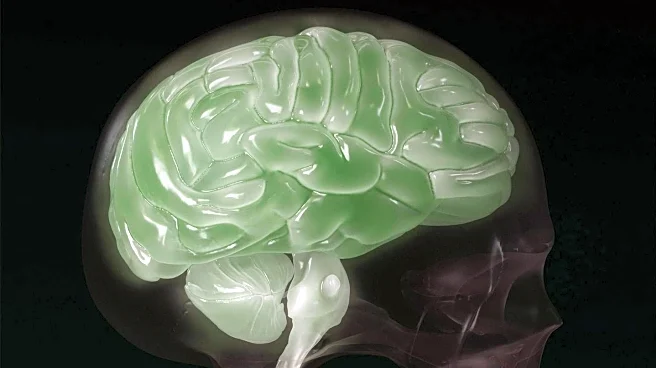What is the story about?
What's Happening?
Recent research has highlighted significant neurodegenerative changes in olfactory-related cortical regions in Parkinson's disease (PD) patients, which are associated with cognitive decline. The study utilized structural and diffusion imaging to identify predictors of clinical progression over a four-year period. Key findings include associations between baseline mean diffusivity (MD) in regions such as the amygdala, orbitofrontal cortex (OFC), insula, and thalamus, and subsequent cognitive changes. Additionally, structural measures like amygdala volume and OFC thickness were linked to changes in cognitive and motor symptoms. The study emphasizes the predictive value of combined micro- and macrostructural imaging and fluid biomarkers, such as serum and CSF NfL levels, in monitoring disease progression and managing PD patients.
Why It's Important?
This research is crucial as it provides insights into the mechanisms underlying cognitive decline in Parkinson's disease, potentially guiding early intervention strategies. By identifying specific biomarkers and imaging indicators, healthcare providers can better predict disease progression and tailor treatment plans to individual patients. The findings could lead to improved patient outcomes by enabling earlier detection of those at higher risk for rapid cognitive decline. Furthermore, understanding the role of olfactory-related cortical regions in PD progression may open new avenues for therapeutic approaches targeting these areas.
What's Next?
Future research may focus on integrating additional imaging modalities, such as tau-PET, to further elucidate the contributions of different pathologies to cognitive decline in PD. There is also potential for developing clinical applications of these biomarkers to enhance early detection and intervention strategies. Researchers may explore the inclusion of these biomarkers in routine clinical assessments to improve prognostic accuracy and therapeutic decision-making. Additionally, further studies could investigate the impact of neurotransmitter-specific contributions to cognitive and motor symptom progression, providing deeper mechanistic insights.
Beyond the Headlines
The study underscores the importance of olfactory-related neuropils in cognitive operations, suggesting that degeneration in these areas may link olfactory impairment to later cognitive impairment. This highlights the potential for olfactory function tests to serve as early indicators of cognitive decline in PD patients. Moreover, the research suggests that disruptions in neurotransmitter systems, such as dopaminergic and cholinergic pathways, may contribute to cognitive decline, offering potential targets for therapeutic intervention.
AI Generated Content
Do you find this article useful?













